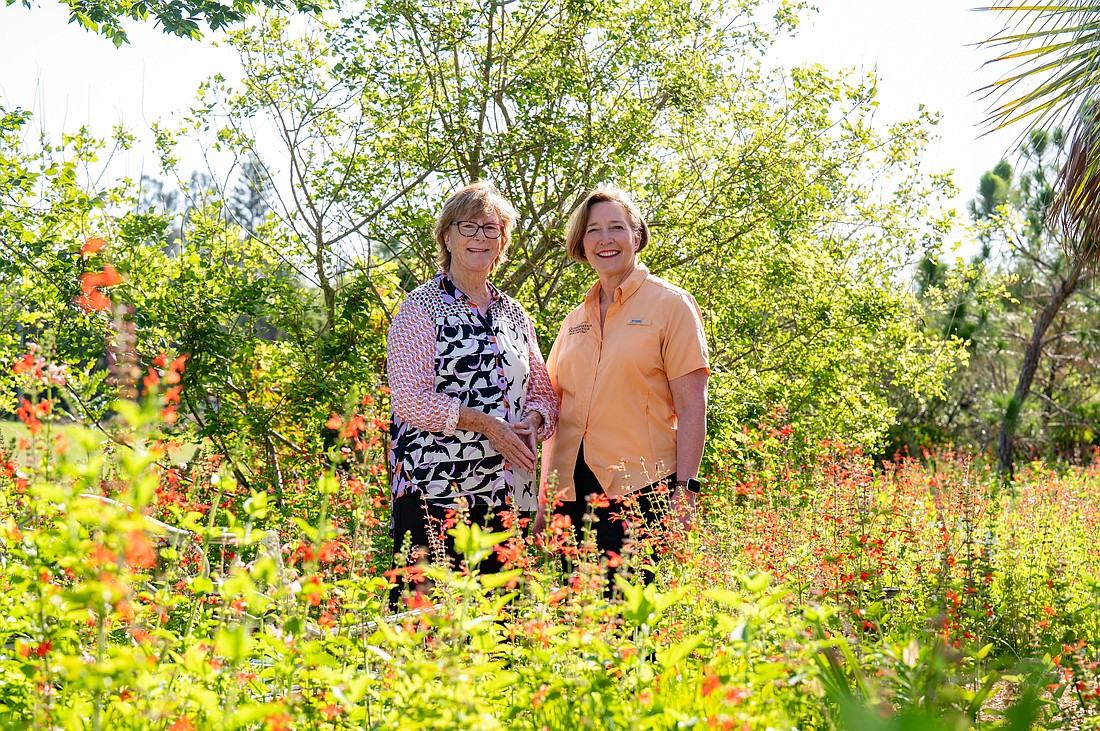- November 5, 2025
-
-
Loading

In the coming months, 33 acres of Sarasota County’s surplus land — land it didn’t want and didn’t know what to do with — will start to undergo a dramatic transformation. The tracts, known as the Quad Parcels, provide a vital buffer zone between the 440-acre Celery Fields and light industrial property to the west.
It could have turned out differently. The county had put the land up for sale, paving the way for potential commercial development. But quick and decisive action by a few environmental groups persuaded the Sarasota County Commission to protect it from development — in perpetuity. If all goes as planned, a “rewilding” project will begin in the fall.
A joint effort between the Sarasota Audubon Society (SAS) and the Conservation Foundation of the Gulf Coast, the project will include the beautifying of a stormwater retention pond, major reforesting to accommodate a wide array of animals and plants, particularly birds, an observation platform, birding trails, a children’s natural play area, picnic pavilion, parking lot and other basic amenities.
SAS and the Conservation Foundation — which were instrumental in lobbying to save the land — have partnered to lead the rewilding project, which will cost an estimated $4 million. “We have to do some major earthwork there,” says Jeanne Dubi, president of SAS. “There will be some major plantings. This is not a chump-change project.”
The two organizations have taken on fundraising responsibilities, as well. According to Dubi, as of late May they had amassed roughly $1.5 million, including $75,000 to each of the nonprofits from the Gulf Coast Community Foundation; $100,000 from William G. and Marie Selby Foundation; $100,000 from Charles & Margery Barancik Foundation; and $250,000 from an anonymous donor. “The big money will start to come in when we actually see shovels in the ground,” Dubi says. “We’re expecting a surge in donations.”
The Quad Parcels — located at the junction of Palmer Boulevard and Apex Road, near I-75 — had languished for a couple of decades. When Sarasota County ultimately put up “For Sale” signs about five years ago, a grassroots activist group called Fresh Start began to push back. Soon SAS and the Conservation Foundation marshaled their considerable influence. “We went to town on the county commission,” Dubi says.
Christine Johnson, president of the Conservation Foundation, says it didn’t take much arm-twisting for the commission to recognize the wisdom of preserving the Quad Parcels from development. After all, it abuts the Celery Fields, which has become a mecca for birding, drawing people from all over the world to experience its array of mostly wetland species.
“I don’t think [county government] anticipated that the Celery Fields would be so popular with the public,” Johnson says, by way of explaining the commission’s attempt to sell the property. “The community pushed to change their plans, and the commission deserves credit for being receptive.”
The five commissioners voted unanimously to approve the measure in October 2020. As it stands, Sarasota County continues to own the Quad Parcels; SAS has signed on to manage the property and the Conservation Foundation owns the conservation easement, a legal agreement guaranteeing that the land will never be built on.

Dubi and Johnson are longtime friends and allies, and their organizations have regularly partnered over the years. This project is their most consequential undertaking.
The blue chip nonprofits complement each other.
The Conservation Foundation, formed in 2003, is an accredited land trust with a paid staff of 16, an annual operating budget of $2 million and $35 million in total assets. Over the years, Johnson says, the organization has protected 19,200 acres of environmentally sensitive lands. Its signature achievement is Orange Hammock Ranch in North Port. The 5,777-acre tract, established in 2020, connects the RV Griffin and Longino preserves, creating a 120,000-acre conservation corridor between the Peace and Myakka rivers and Charlotte Harbor. Old Hammock Ranch protects drinking water, preserves wildlife habitat and offers public access for myriad outdoor recreation.
The all-volunteer SAS, a 35-year chapter of the National Audubon Society, is dedicated to the protection, conservation and enjoyment of birds. The organization holds birding excursions and acts as the preeminent local resource for avian enthusiasts. SAS is headquartered in the heart of Celery Fields at The Nature Center, which it owns and operates.
The Quad Parcels rewilding project aims to provide a stopover for several species of migratory birds. “They require a more specific habitat for them to rest and refuel on their way north and south,” Dubi says. “So, we’re planting for those specific birds, all of which are on Florida’s endangered species list.”
Once the rewilding effort gets underway, both Johnson and Dubi expect the project to be completed in a year to 15 months.
Correction: This article has been updated to correct the name of the Conservation Foundation of the Gulf Coast.